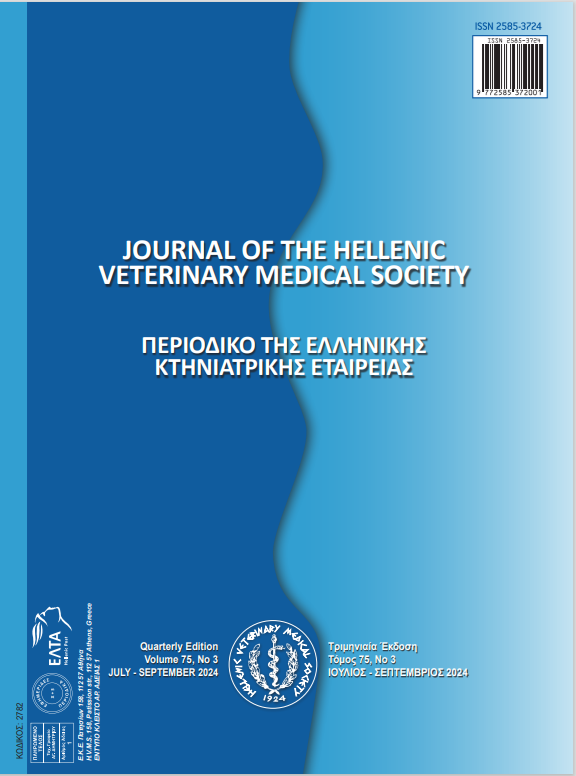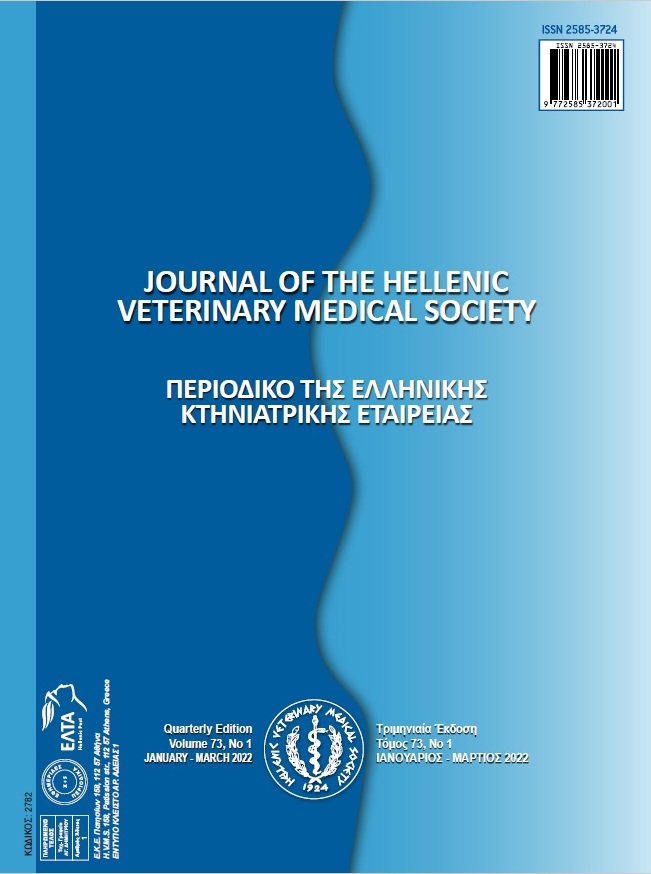The influence of the homofermentative lactic acid bacteria and enzymes on the nutritional value, health safety, and aerobic deterioration of the different maize hybrid silages
Περίληψη
The research aimed to determine the impact of identic inoculants of lactic acid bacteria (LAB) with enzymes (ENZ) on the silage quality of 5 different corn hybrids (Zea mays). Hybrids (Pioneer Hi-Bred DuPont) differed by FAO maturity group (from early H1, mid-early H2, medium H3, mid-late H4 to late H5). Inoculant LAB consisted of a mixture of homofermentative bacteria: Lactobacillus plantarum, Enterococcus faecium, Pediococcus acidilactici, Lactobacillus salivarius, and ENZ: cellulase, α- amylase, hemicellulase, xylanase. Ensiling was done at the laboratory conditions, where the green mass of corn hybrids has been inoculated with LAB and ENZ were added, before ensiling. The process of ensiling lasted 60 days. The addition of LAB inoculants with ENZ is frequently used to speed up the ensiling process, prevent the growth of harmful microorganisms, protect the aerobic stability of silage, and improve the silage quality of different crops. The phase of aerobic degradation of silage begins immediately after exposure to silage to air. This stage is inevitable during feeding with silage and takes place in all silages, regardless of quality.
The same pattern of reaction on identic LAB and EFEs addition was not found in silages ensiled from different hybrids. Among the evaluated corn hybrids, the additive to H1 early maturity hybrid had significantly improved the silage quality, and prolonged the time of aerobic stability, mainly due to the significantly highest CP, lowest ADL, and highest LA content. The chemical composition, fermentation, and microbiology profiles of silage significantly influence CO2 production in a test of aerobic stability (AS), and this is a causal relationship of aerobic stability duration. The results of this trial showed that the lower butyric acid, total microorganisms number, count of yeasts and mold, pH, and higher LAB, lactic acid, and acetic acid levels (P<0.05), are accompanied by the production of lower CO2 (P<0.05). The current research and previous studies suggest that nutritional value, health safety, and aerobic deterioration of the different maize hybrid silages are under the influence of epiphytic microflora of ensiled plants, used LAB inoculum, and EFEs addition in the appropriate amount, and the type of hybrid ensiled as well.
Λεπτομέρειες άρθρου
- Πώς να δημιουργήσετε Αναφορές
-
Ivetić, A., Stojanović, B., Puvača, N., Radulović, S., Ćosić, M., Bajagić, M., & Petrujkić, B. (2024). The influence of the homofermentative lactic acid bacteria and enzymes on the nutritional value, health safety, and aerobic deterioration of the different maize hybrid silages. Περιοδικό της Ελληνικής Κτηνιατρικής Εταιρείας, 75(3), 7871–7886. https://doi.org/10.12681/jhvms.35678
- Τεύχος
- Τόμ. 75 Αρ. 3 (2024)
- Ενότητα
- Research Articles

Αυτή η εργασία είναι αδειοδοτημένη υπό το CC Αναφορά Δημιουργού – Μη Εμπορική Χρήση 4.0.
Οι συγγραφείς των άρθρων που δημοσιεύονται στο περιοδικό διατηρούν τα δικαιώματα πνευματικής ιδιοκτησίας επί των άρθρων τους, δίνοντας στο περιοδικό το δικαίωμα της πρώτης δημοσίευσης.
Άρθρα που δημοσιεύονται στο περιοδικό διατίθενται με άδεια Creative Commons 4.0 Non Commercial και σύμφωνα με την άδεια μπορούν να χρησιμοποιούνται ελεύθερα, με αναφορά στο/στη συγγραφέα και στην πρώτη δημοσίευση για μη κερδοσκοπικούς σκοπούς.
Οι συγγραφείς μπορούν να καταθέσουν το άρθρο σε ιδρυματικό ή άλλο αποθετήριο ή/και να το δημοσιεύσουν σε άλλη έκδοση, με υποχρεωτική την αναφορά πρώτης δημοσίευσης στο J Hellenic Vet Med Soc
Οι συγγραφείς ενθαρρύνονται να καταθέσουν σε αποθετήριο ή να δημοσιεύσουν την εργασία τους στο διαδίκτυο πριν ή κατά τη διαδικασία υποβολής και αξιολόγησής της.




